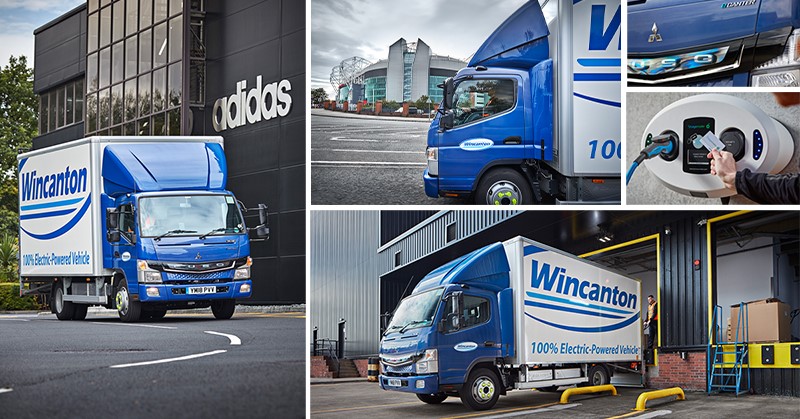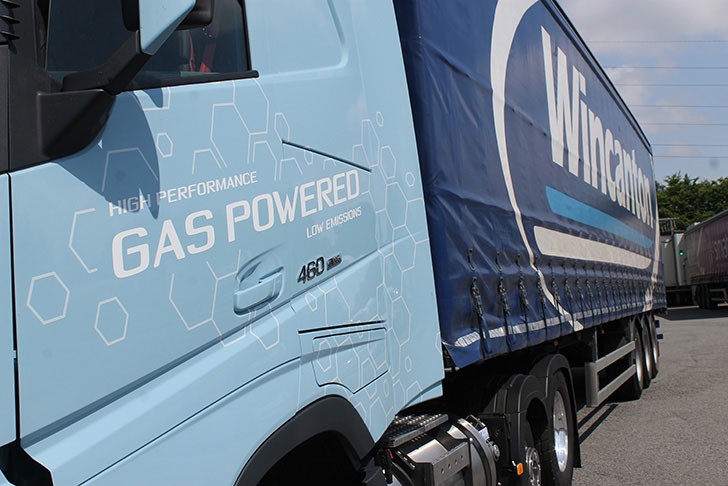
With electric vehicles (EVs) an option to help improve the environment, our Group Procurement and Fleet Director, Carl Hanson, has taken a look at this method to explore how viable they are.
Alternative fuels in logistics, particularly electricity, is a topic that won’t be going away any time soon.
Manufacturers are facing strict EU regulations that will see them pushed to reduce CO2 emissions for all heavy-duty vehicles built from 2025 onwards by 15%, while fleet operators face the challenge of low emission zones in major cities; for example London’s Ultra Low Emission Zone (ULEZ).
These two factors are indicative of a real push to reduce the environmental impact of vehicles on our roads. Indeed, their influence will likely grow further, with the same emissions regulations to move the target from 15% to 30% by 2030, and more and more cities in the UK alone exploring the feasibility of low emission zones (LEZs).
Electric-powered HGVs are an obvious response. This form of power removes CO2 emissions directly from vehicles, helping both manufacturers and operators respond.
While it’s commonplace to see electric-powered cars, taxis and even busses in urban areas, electricity has not yet truly established itself in the commercial vehicle market; especially when it comes to large vehicles covering great distances.
Electric HGVs are being explored by some - Wincanton has electric-powered units among its fleet already for final mile deliveries - but there are challenges facing the industry when it comes to widescale adoption of this method of power.

We need to balance three major factors for electricity to be the answer for longer journeys – the bedrock of logistics - with each being equally important:
- Is the infrastructure in place? Are there accessible facilities for fast, safe charging that cover the UK’s major transport routes?
- Can we get the vehicles? Are the electric-powered vehicles that offer the range and size needed available?
- Is it feasible to invest? Can businesses afford to onboard these vehicles, deliver the necessary training and supply equipment for them to operate, all while remaining profitable?
Unless all of these questions are addressed and the factors balanced, the widescale adoption of electric commercial vehicles will be limited. For example, a lack of infrastructure blocks the locations in which they can function; too few suitable vehicles being available means they cannot be widely used; and high costs make them uneconomic.
Alternatives to the alternative
Electricity could become a viable long-term option to support the transport aspect of the entire logistics industry if the above factors are properly addressed through a combination of government, operator and manufacturer activity. But until its potential can be fully harnessed, a series of different approaches and marginal gains could put the industry on the right path to reducing its environmental impact, at least in the short-to-medium-term.
New diesel engines that meet Euro VI standards remain the top choice for fleet operators due to the range and efficiency they offer. Currently, electricity cannot match their capabilities, but alternative fuels, such as LPG (liquified petroleum gas) and LNG (liquified natural gas) can.

Granted, neither is as clean as electricity, but they offer an improvement on diesel that, if extrapolated across a large chunk of UK fleets, could make a real impact.
There’s also the option of electric-fuel hybrid HGVs. There remain similar cost and availability issues around these vehicles, but they don’t require the same compromise when it comes to range. What they do offer is the benefit of efficient diesel engines for long-distance travel, alongside the cleanliness of electricity when travelling at lower speeds in urban areas and in traffic. Issues around charging still need consideration; but with this a less frequent activity, the same level of infrastructure is not needed.
Consolidation
Replacing diesel for long-distance travel may be a challenge in the immediate future, but for shorter journeys it’s becoming increasingly feasible.
A short-term answer may be to consolidate loads for final mile and urban deliveries, reducing the distance between destinations and the frequency of travel
Fuel for change
Away from switching the fuel and the vehicles, there are wider behavioural change and operational topics to be discussed.
At Wincanton, our use of MiX Telematics promotes efficient driving behaviours among our pool of drivers. By measuring driving habits – such as braking, accelerating and speed – it provides each with an efficiency score, which they can access and monitor through an app on their mobile phones at the end of journeys. This allows Wincanton to recognise and reward efficient drivers, deliver the training to promote this behaviour and, over time, positively affect the environmental impact of its operations.
We couple this with a bespoke transport management system (TMS). The TMS allows our central team of planners to organise, optimise and monitor each journey, and plan loads in the most efficient manner possible. This reduces miles on the road, ensures we’re making every mile covered as efficient as possible and keeps our drivers safe by diverting around potential hazards.
Of course, this level of investment is not possible for all operators, especially those with small fleets, but if similar measures were to be rolled out by more, the effects could be significant.
As an industry, logistics needs to think differently about its impact on the environment. But until questions around infrastructure, availability and cost are answered, EVs aren’t viable beyond urban, short-distance operations; which Wincanton uses them for in major cities such as London and Manchester.
Electricity remains a potential solution to reducing the environmental impact of logistics in the UK, but it will take time to overcome the major issues facing EV adoption. In the meantime, doing all we can to reduce emissions, while collaborating to lay the foundations for electric-powered HGVs, looks to be the best possible route.

